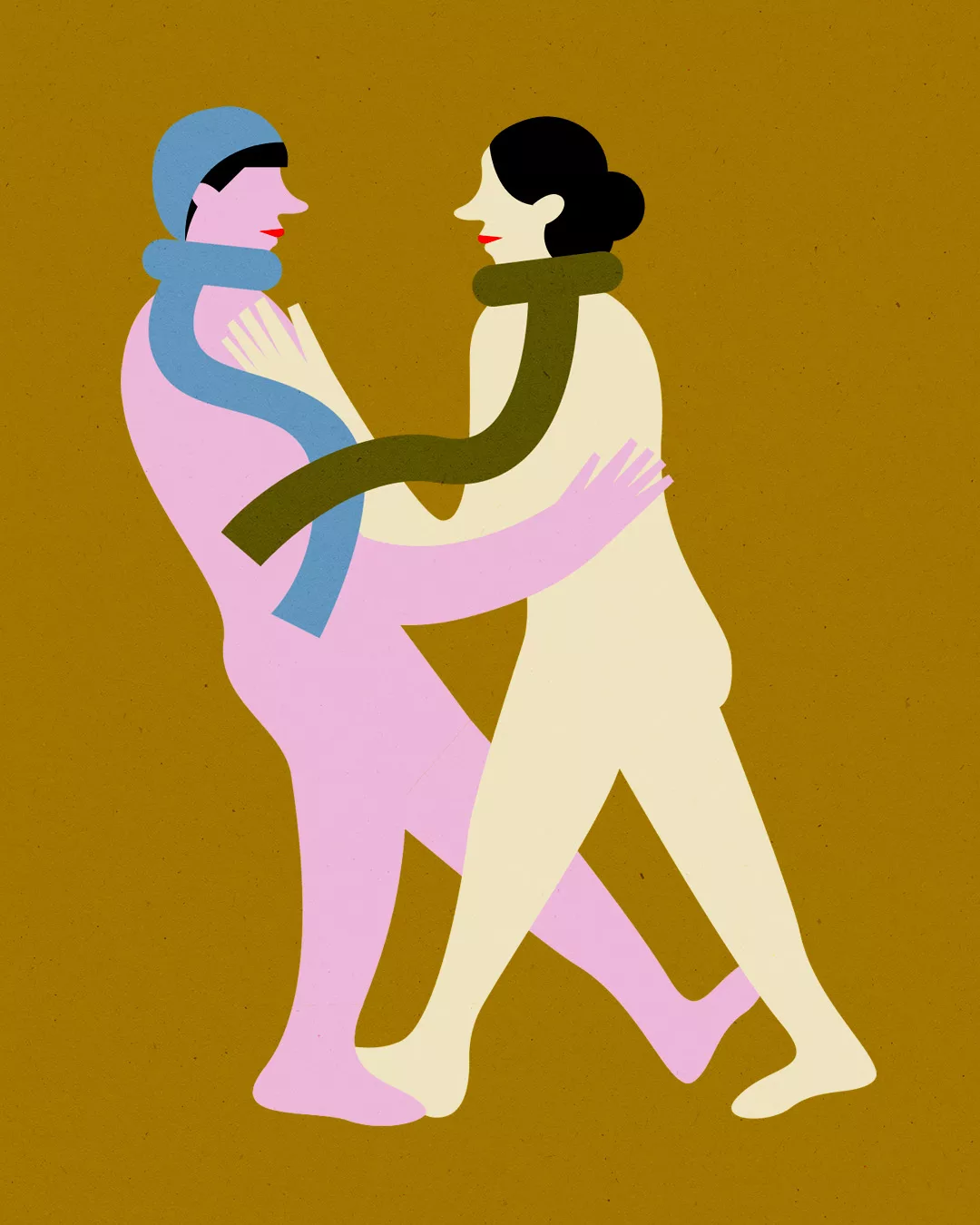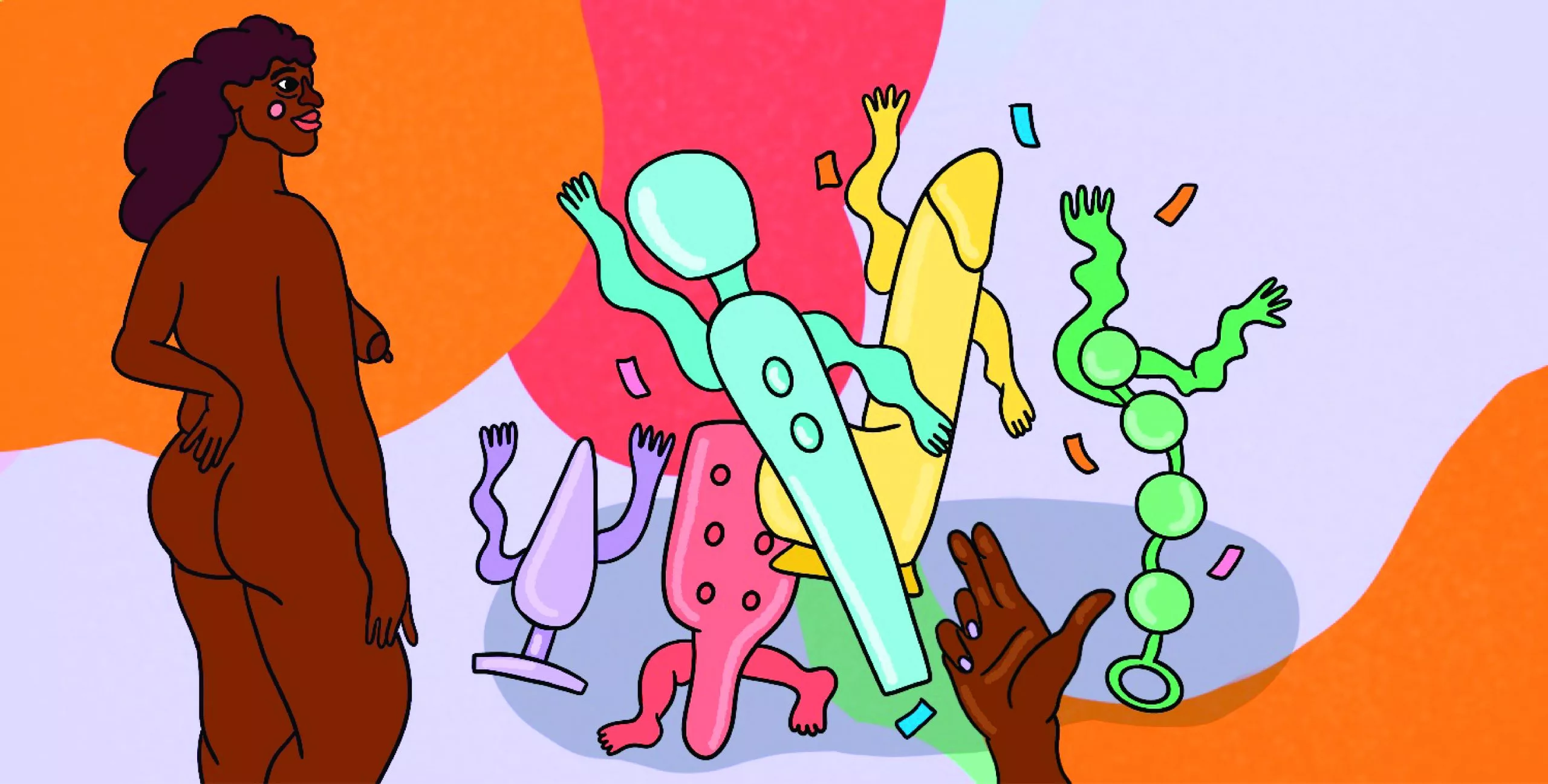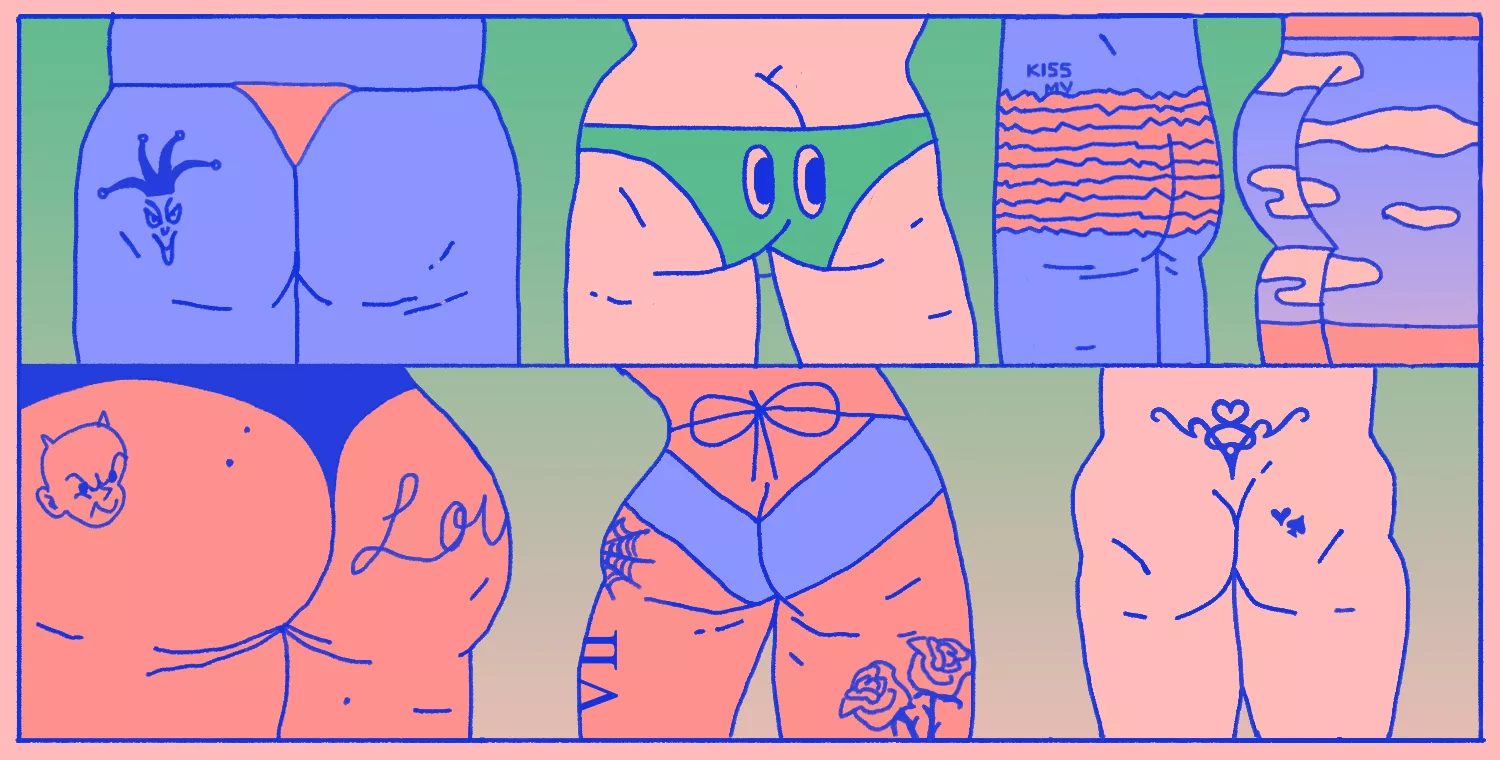Your cart is currently empty!

I Came to Tell You I Didn’t: The Orgasmic Gap, Explained
I never ever came with a casual partner. It didn’t matter how sexy or attractive I found them or how much I liked them (some of them were friends). During sex, I only had orgasms with boyfriends. In two cases, it’s with men who have *become* committed partners. It’s as though my orgasms are boyfriend detectors.
While orgasm isn’t necessarily the main goal of sex, we’re not gonna lie; orgasms are pretty awesome.
In early 2020, Club Sexu conducted an online survey study in which 2,530 followers participated. This survey found that 88% of men reached orgasm the last time they had sex, compared to only 53% of women and 56% of 🌈 people! While these gender gaps may be huge, they’re even greater when taking into account people’s relationship status and sexual orientation (see the table below).
Overall, our data shows that people in relationships are more likely to reach orgasm during sex compared to single people. This is completely normal since the more someone knows you sexually, the more they’ll know what to do (and what not to do) to maximize your pleasure. 😉
Did you reach orgasm the last time you had sex?
| Single | Men | Woman | 🌈 |
| Straight | 85 % | 43 % | 33 % |
| Bisexual and Pansexual | 67 % | 51 % | 48 % |
| Gay/Lesbian | 79 % | 39 % | 50 % |
| In a relationship | Men | Woman | 🌈 |
| Straight | 85 % | 43 % | 33 % |
| Bisexual and Pansexual | 67 % | 51 % | 48 % |
| Gay/Lesbian | 79 % | 39 % | 50 % |
Our data also show that for women and 🌈 people, being straight means having fewer orgasms. In contrast, the people reporting the most orgasms are straight men. Overall, those reporting the least orgasms are straight women and 🌈 people. This tendency has also been documented in other studies (Frederick et al., 2018; Willis et al., 2018). So what’s going on?
Why the big orgasm gap?
I rarely have orgasms with my sexual partners. I often feel like the men I’m with don’t care about my sexual pleasure or are frustrated when I don’t orgasm quickly enough. I just want people to want to give me pleasure because I deserve pleasure.
A popular belief that many people bring up to explain the huge orgasm gap between straight women and men is that women’s orgasms are generally complex and difficult to achieve, while men’s are “naturally” easy to reach. Yet, as demonstrated by our data as well as in other research (Frederick et al., 2018; Willis et al., 2018), partnered lesbian women orgasm significantly more often than partnered straight and bisexual/pansexual women. These findings suggest that the “difficulty” of female orgasm has more to do with context than with gender. In other words, it’s the fact of having sex with men, specifically, that makes orgasm less frequent in women. Strike one!
But, wait a minute! Don’t lesbian women achieve more orgasms than straight women simply because they are better positioned to understand another woman’s body, and therefore, to be better at giving their partners pleasure and orgasms than straight men? This popular belief makes sense but, if it were true, we’d see the same tendency in men, with straight men reporting fewer orgasms than gay men. However, the data shows the opposite. Strike two!
Okay. So what is it about straight sex that gets in the way of women’s orgasms? According to a study conducted by Malachi Willis and colleagues (2018), the orgasm gap between straight women and men is due, at least in part, to sexual practices that are less varied and more focused on penile stimulation, particularly vaginal penetration. Note that vaginal sex isn’t problematic per se. After all, it’s pleasurable to most (but not all) people, regardless of gender. What is problematic, however, is the fact that it’s the most frequent sexual practice among heterosexual people (Herbenick et al., 2010a), regardless of its (in)efficiency in inducing orgasm in women.
In fact, for most women, vaginal penetration alone is incompatible with achieving orgasm, since it stimulates the clitoris, the seat of sexual pleasure, only indirectly, if at all.
Strike three!
What we see on the small and big screen – women easily reaching orgasm through penetration, usually at the same time as their partner, as if by magic – is far-fetched. Several studies support the relative rarity of the “vaginal” orgasm. For example, a meta-analysis of 33 studies conducted over an 80-year period, Elisabeth Lloyd (2006) found that only 25% of women always or almost always achieve orgasm through vaginal penetration alone. According to another study, only 47% of women have ever reached orgasm through vaginal penetration in their lifetime (Fugl-Meyer et al., 2006).
According to Lili Boisvert (2019), a Quebec journalist and columnist, the orgasm gap between straight women and men is the result of three things that “over”-value and emphasize the vagina and vaginal pleasure to the exclusion of other pleasurable practices and erogenous zones:
- Ordinary sexism. Since most heterosexual men reach orgasm through the back and forth stimulation provided to their penises by a vagina, it is believed that heterosexual women “should” also then experience sexual pleasure and orgasms through this act.
- The prudish teaching of reproductive sexuality. Beyond information on sexually transmitted infections and pregnancy, sex education in our society is often limited to the mechanisms involved in procreation. In terms of sexual practices, this means that what is taught is generally limited to penile-vaginal penetration that ends with an ejaculation inside the vagina. The clitoris and the pleasure it can bring to its owner – including orgasm – are rendered secondary or even neglected in sex education.
- Naive romanticism. The “natural” interlocking of the penis and vagina is seen as “proof” of the “perfect” union between cisgender women and men and thus speaks to the “inherent” complementarity of the sexes. Yikes! The more there are quotation marks, the less we can trust the legitimacy of what’s being said. 😉
Take-home messages: What to do with all this information?
I went to the house of someone I was seeing, only to find her waiting for me wearing nothing but a shirt. She grabbed my erect penis and started jerking me off. Her skin smelled of a perfume I’ve never again experienced. She went to slip my penis inside her… but it didn’t fit. This was no reason not to try something else to make her come. I got down on my knees and ate her out. The excitement from feeling her hand grab my hair in the throes of pleasure was amazing.
The data may not shine a positive light on heterosexuality, but the good news is that straight people all have the power to shape their sexual encounters to their liking and change the game. Here are a few things to note to better change the discourse on sexual pleasure for people with a clitoris, improve the quality of heterosexual sex, and increase sexual pleasure for everyone:
- First of all, if you own a vagina and cannot come through vaginal penetration without any clitoral stimulation, know that you are completely normal. If you date a person who has a vagina and who rarely or never manages to reach orgasm through penetration alone, know that they are completely normal.
- We must recognise that stimulating the head of the clitoris plays an essential role in achieving orgasm in the majority of people who have one. Let’s not neglect the clitoris, it wants to play too!… or rather, be played with. 😉
- As a nationally representative U.S. study has shown (Herbenick et al., 2010b), the more that people incorporate a wide variety of sexual practices during sex, the more likely they are to achieve orgasm – regardless of gender. So indulge in caresses, kissing, oral sex (or other activities), or sex toys! Anything that would make both (or all) of you happy. 😊
- And last but not least, we mustn’t be afraid to communicate before, during, and after sex about what gives us pleasure. Admittedly, this is easier said than done, but it’s totally worth it! Know that a partner’s pleasure is highly valued by most people, regardless of gender, especially in committed relationships. So we mustn’t be afraid of our partner’s reaction to our disclosures of what would turn us on, like being on top or incorporating a vibrator or engaging in role-play, for instance. 😏
To sum up, the orgasm gap between straight men and women is mainly due to a lack of variety in their shared sexual repertoire, the neglect of the clitoris during sex (the poor thing!) and poor of sexual communication, and not because women are “naturally” less sexual or more “complicated” than men. Let’s not forget that there are a myriad of ways to experience sexual pleasure, with penile-vaginal penetration being just one of many! Giving as much love to the clitoris as to the penis, diversifying sexual activities and openly sharing with our partner what makes us feel good can all contribute to reducing the orgasm gap.
That said, it’s also okay not to come during sex! Orgasms are more like icing on a cake or a cherry on a sundae. A sundae will still be delicious even without the cherry on top. Similarly, while orgasms are fun, they’re not the sole or even the main purpose of sex (Meston & Buss, 2007). Sex can be very satisfying without an orgasm, as long as it includes other elements that are important to us such as intimacy, exploration, empathy, passion, etc.
Orgasm doesn’t deserve all the spotlight. 😉
-
Boisvert, L. (2019). Screwed: How women are set up to fail at sex. Dundurn Press.
Frederick, D. A., John, H. K. S., Garcia, J. R., & Lloyd, E. A. (2018). Differences in orgasm frequency among gay, lesbian, bisexual, and heterosexual men and women in a US national sample. Archives of Sexual Behavior, 47(1), 273-288. https://doi.org/10.1007/s10508-017-0939-z
Fugl-Meyer, K. S., Öberg, K., Lundberg, P. O., Lewin, B., & Fugl-Meyer, A. (2006). On orgasm, sexual techniques, and erotic perceptions in 18- to 74-year-old Swedish women. The Journal of Sexual Medicine, 3(1), 56-68. https://doi.org/10.1111/j.1743-6109.2005.00170.x
Herbenick, D., Reece, M., Schick, V., Sanders, S. A., Dodge, B., & Fortenberry, J. D. (2010a). Sexual behavior in the United States: Results from a national probability sample of men and women ages 14–94. The Journal of Sexual Medicine, 7(s5), 255-265. https://doi.org/10.1111/j.1743-6109.2010.02012.x
Herbenick, D., Reece, M., Schick, V., Sanders, S. A., Dodge, B., & Fortenberry, J. D. (2010b). An event-level analysis of the sexual characteristics and composition among adults ages 18 to 59: Results from a national probability sample in the United States. Journal of Sexual Medicine, 7(s5), 346-361. https://doi.org/10.1111/j.1743-6109.2010.02020.x
Lloyd, E. A. (2006). The case of the female orgasm: Bias in the science of evolution. Harvard University Press.
Meston, C. M. & Buss, D. M. (2007). Why humans have sex. Archives of Sexual Behavior, 36, 477-507. https://doi.org/10.1007/s10508-007-9175-2
Willis, M., Jozkowski, K. N., Lo, W. J., & Sanders, S. A. (2018). Are women’s orgasms hindered by phallocentric imperatives?. Archives of Sexual Behavior, 47(6), 1565-1576. https://doi.org/10.1007/s10508-018-1149-z





